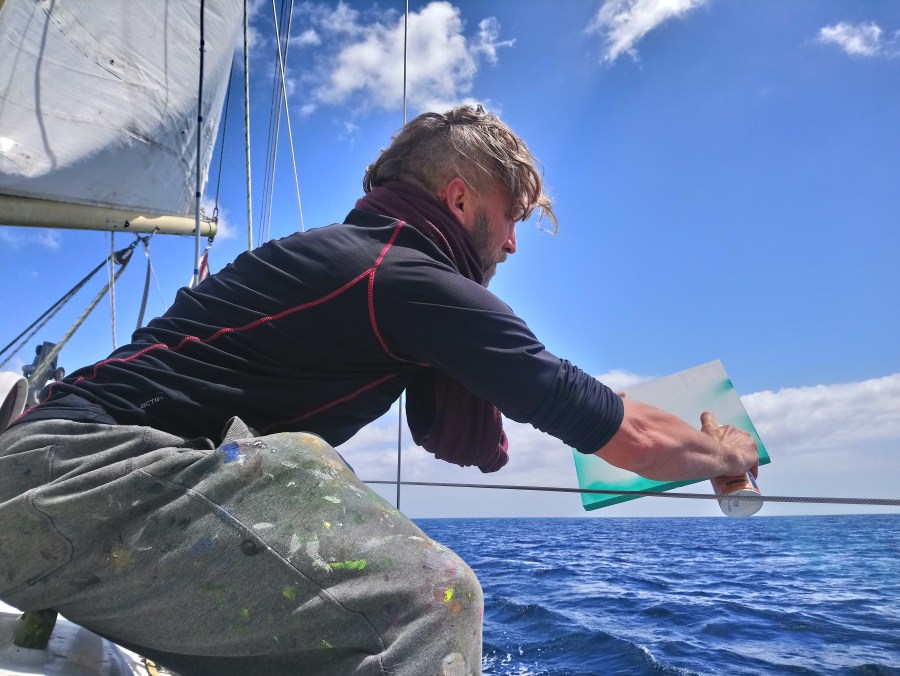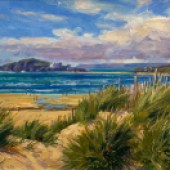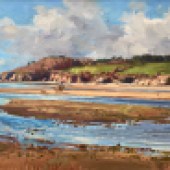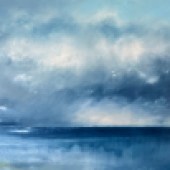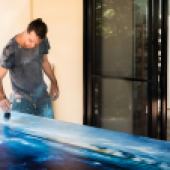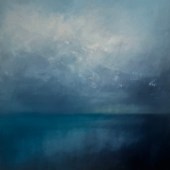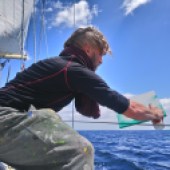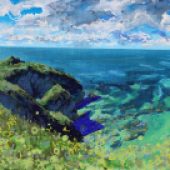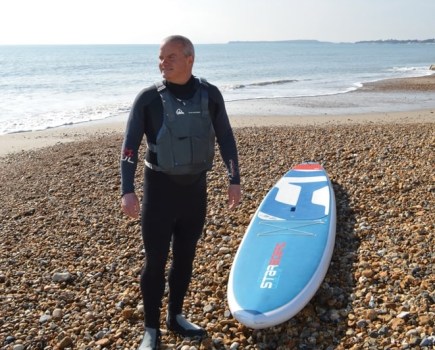It is where the sea meets the sky, but for coastal artists and art lovers alike, the coastline represents so much more, writes CAROL BURNS.
The coast has always held a unique fascination for artists. The light – magnified by the ocean and the miles of uninterrupted horizons – has drawn painters to Britain’s shoreline for centuries. But every artist will interpret the world around them differently and it is this endless possibility that keeps us enthralled by seascapes.
Patrick Heron created some of his best work during his stay in Cornwall’s St Ives, while JMW Turner created hundreds of sketches and watercolours capturing turbulent seas often inspired by his frequent stays on the Kent coastline.
For contemporary artists, the coast continues to hold their attention. Abstract artists are drawn to the scale, colour and texture, while traditional landscape artists love the light, wide open horizons and the contrast between the coast and the more traditional English countryside.
For Ben Lucas, who is based on the north Devon coast, his seascape paintings reference the vista and the emotive power of a sea that at any moment could envelop us. His atmospheric artworks reflect Lucas’ life-long interest. He grew up on the coastline and now makes his living translating it onto canvases. After 17 years in Australia he returned to his home county and admits he finds the more varied light in the south west more interesting to study.
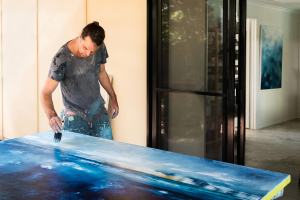
Lucas’ practice balances the sights of the sea with the feelings they evoke. Unusually, he works from memory, rather than what is in front of him. “I am fascinated by the sea and the sky and its reflections. I spend a lot of time walking and surfing and watching the sea. I absorb all that and then I paint,” he explains. “The subject unfolds as I paint. I probably spend 80 per cent looking at the sea, ten per cent thinking about it and the other ten per cent painting.”
His aim is to distil all the things we feel about the coast, rather than a familiar view. “When it works well, I am working with the paint, not dictating it,” he explains. “I know when a painting is working when I have an emotional response to it.”
His style of working from memory allows many of the universal themes of coastal painting to emerge, along with landmarks. “People can really relate to the work and link it to their own memory of a place.” Does he tell them that it’s not where they think it is? “I try to be honest,” he says.
Meet coastal artist Zee van Gils.
He will try and work on one painting at a time, ideally in one sitting to create a seamless quality. “I work from memory, drawing on my observations of the sea’s ever-changing moods and the interplay of light above and upon its surface.”
Artists like Monet favoured painting outside, or en plein air (literally meaning in the air) and who are we to disagree with the Master of Impressionism who created all those beautiful paintings of water lilies? Certainly not Joe Webster, who can be found painting en plein air, whatever the weather.
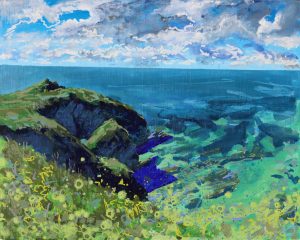
He and his canvases can be found along the coast, as he allows the weather and atmosphere of the wild Atlantic to envelope both him and his work. “The core of my work is the action of water,” he says. And you will find some of it literally on his canvases. “I’m not a fair-weather painter,” he admits. “A lot of artists go outside and make some sketches and take them back and work in the studio.”
He began capturing the coastline more faithfully but has steadily developed his style to a more extreme plein air to capture the battle of nature in real-time.
For Webster the outside is his studio, and the wetter and windier, the better. During the recent Storm Eunice, he could be found outside painting in driving rain and 120 mph gusts of wind.
“I’m not drawn to painting the coastline when it’s still,” he admits. “It’s something about the energy, you see an approaching rain cloud and you have a time limit.” Instead of trying to keep his canvas dry, he allows the rain to dilute the paint, the wind to push the paint around the canvas. He will then use mediums to incorporate an urban element through fast-trying spray paint and permanent markers.
Andrew Miller takes a different slant in capturing the coastline. The Totnes-based artist paints a lot of local seaside scenes as well as landscapes. The former illustrator also spent time in Afghanistan as a war artist capturing the war-ravaged landscape.
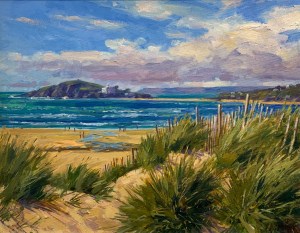
“I’ve lived in Devon all my life,” he says. “I like to do as much as I can outside. I don’t find it easy to do a landscape unless I’ve been in it. It can be quite exciting because the weather can change quite dramatically.”
Miller will sketch outside and take photographs and work up his paintings in his studio, even then he will find himself heading outside to soak up some more of the atmosphere. Living in a tourist area, his work is popular with visitors keen to take a piece of the stunning South West coastline home with them.
These three very different painters approach the subject of the coastline in completely different ways, but all capture the many different ways we all feel about our coast and illustrate so perfectly how the meeting of sky and sea invigorates and inspires us all.
There’s plenty of evidence that living by the coast is good for our mental health. And it seems it’s just as good for the art world too.
You can read more about the artists at brownstonart.com

